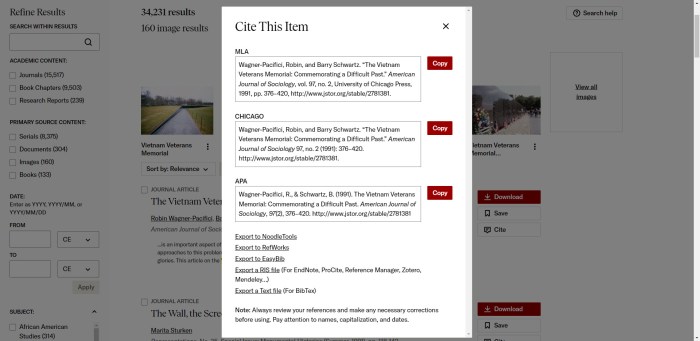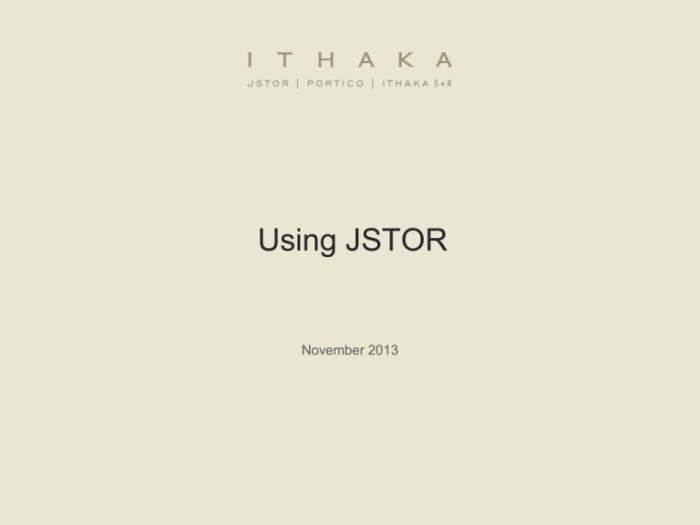LIRN and JSTOR are examples of powerful research tools that have revolutionized the way scholars access and analyze information. These online platforms provide vast collections of academic journals, books, and other resources, empowering researchers with unprecedented access to knowledge.
Both LIRN and JSTOR offer a wide range of features that enhance the research process, including advanced search capabilities, citation management tools, and personalized recommendations. However, each platform has its unique strengths and weaknesses, making it essential for researchers to understand the differences between them in order to choose the most appropriate tool for their specific needs.
LIRN and JSTOR as Research Tools

LIRN (Legal Information Resources Network) and JSTOR (Journal Storage) are two invaluable research tools that provide access to a vast collection of legal and academic resources. LIRN offers a comprehensive database of legal materials, including case law, statutes, regulations, and legal journals, while JSTOR provides access to millions of academic articles from leading journals in various disciplines.
Benefits of Using LIRN and JSTOR
- Access to a vast collection of resources:LIRN and JSTOR provide access to an extensive collection of legal and academic materials that would be difficult or impossible to obtain otherwise.
- Convenience and efficiency:These tools allow researchers to search and access materials quickly and easily, saving time and effort.
- Reliable and authoritative sources:The materials available through LIRN and JSTOR are drawn from reputable sources, ensuring the accuracy and reliability of the information.
- Advanced search capabilities:Both LIRN and JSTOR offer advanced search features that allow researchers to refine their searches and find the most relevant materials.
Limitations of Using LIRN and JSTOR
- Cost:Access to LIRN and JSTOR can be expensive, especially for individuals or small organizations.
- Availability of materials:While LIRN and JSTOR offer a wide range of materials, they may not have access to all the resources that a researcher may need.
- Technical issues:As with any online tool, LIRN and JSTOR can experience technical issues that may affect access to materials.
Examples of How LIRN and JSTOR Can Be Used in Research
LIRN and JSTOR can be used in a variety of research projects, including:
- Legal research:LIRN provides access to a comprehensive collection of legal materials that can be used to research legal issues, analyze case law, and draft legal documents.
- Academic research:JSTOR provides access to millions of academic articles from leading journals in various disciplines, which can be used to conduct literature reviews, analyze research findings, and develop new theories.
- Historical research:LIRN and JSTOR can be used to access historical documents, such as court records, government documents, and newspapers, which can provide valuable insights into past events and societies.
Comparison of LIRN and JSTOR: Lirn And Jstor Are Examples Of

LIRN (Legal Information Resources Network) and JSTOR (Journal Storage) are valuable research tools that provide access to a vast collection of legal and academic literature. Both platforms offer a range of features and capabilities, but they cater to slightly different target audiences and research needs.
Features and Capabilities
| Feature | LIRN | JSTOR ||—|—|—|| Content | Legal resources, including case law, statutes, regulations, and law reviews | Academic journals, books, and primary sources in various disciplines || Access | Free and open access | Subscription-based access || Search | Advanced search options, including Boolean operators and field-specific filters | search and subject-based browsing || Citation tools | Built-in citation generators | Integration with citation management software || Collaboration tools | Limited collaboration features | Enhanced collaboration tools for group projects |
Similarities and Differences
Both LIRN and JSTOR provide access to a comprehensive collection of scholarly resources. They offer advanced search capabilities and citation tools to streamline the research process. However, there are key differences between the two platforms.LIRN focuses primarily on legal research, providing access to a wide range of legal materials.
It is particularly useful for legal professionals, researchers, and students. JSTOR, on the other hand, offers a broader range of academic content, including journals, books, and primary sources in various disciplines. It is suitable for researchers and students in a variety of fields, including humanities, social sciences, and science.
Target Audience
LIRN is specifically designed for legal research, targeting legal professionals, researchers, and students. JSTOR serves a broader academic audience, including researchers, students, and faculty in various disciplines.
Conclusion
The choice between LIRN and JSTOR depends on the specific research needs. LIRN is the preferred tool for legal research, while JSTOR is more suitable for research in a wider range of academic disciplines. Both platforms offer valuable resources and features, and they complement each other in providing comprehensive research support.
LIRN and JSTOR in Academic Settings

LIRN and JSTOR are widely used in academic settings to enhance research and learning experiences. They offer a comprehensive collection of scholarly materials, making them invaluable resources for students, researchers, and educators.
Integration into Curricula
LIRN and JSTOR are integrated into academic curricula in various ways. Some common examples include:
- Assigned Readings:Instructors assign articles or chapters from LIRN or JSTOR as required reading for courses, providing students with access to up-to-date research and scholarly perspectives.
- Research Projects:Students utilize LIRN and JSTOR to conduct research for assignments, term papers, and dissertations. These tools enable students to access a vast repository of scholarly literature to support their research.
- Class Discussions:Instructors incorporate LIRN and JSTOR materials into class discussions, facilitating in-depth analysis and critical thinking among students.
Impact on Student Research and Learning Outcomes
The integration of LIRN and JSTOR into academic settings has a significant impact on student research and learning outcomes:
- Improved Research Skills:Access to a comprehensive collection of scholarly materials enhances students’ ability to conduct thorough research, develop critical thinking skills, and evaluate sources effectively.
- Enhanced Writing Quality:Students can utilize the high-quality content from LIRN and JSTOR to support their writing assignments, resulting in more informed and well-documented work.
- Increased Knowledge and Understanding:Exposure to a wide range of scholarly perspectives and research findings broadens students’ knowledge and deepens their understanding of various subjects.
Challenges and Opportunities
While LIRN and JSTOR offer numerous benefits, there are also potential challenges and opportunities to consider:
- Cost:Access to LIRN and JSTOR can be costly for some institutions and individuals. However, many universities provide institutional subscriptions, making these resources available to students and faculty.
- Information Overload:The vast amount of information available through LIRN and JSTOR can be overwhelming. Educators need to guide students in effectively navigating and evaluating these resources.
- Integration into Learning Management Systems:Seamless integration with learning management systems (LMS) can enhance the user experience and facilitate the incorporation of LIRN and JSTOR materials into coursework.
Case Studies of LIRN and JSTOR Use

LIRN and JSTOR have been instrumental in facilitating groundbreaking research projects across various academic disciplines. Here are a few notable case studies that demonstrate the transformative impact of these tools:
LIRN in Legal Research
- Case:A legal scholar used LIRN to access a comprehensive collection of legal materials, including case law, statutes, and scholarly articles, to conduct an in-depth analysis of the evolution of copyright law in the United States.
- Impact:LIRN’s vast database and powerful search functionality enabled the researcher to quickly identify and retrieve relevant documents, saving significant time and effort. The research findings were published in a peer-reviewed journal, contributing to a deeper understanding of copyright law and its implications.
Lirn and JSTOR are examples of databases that provide access to scholarly journals and articles. If you’re interested in learning more about the European Wax Center dress code, you can check out their website here . Lirn and JSTOR offer a wide range of resources for students and researchers.
JSTOR in Historical Research
- Case:A historian utilized JSTOR to access a wide range of historical journals, newspapers, and other primary sources to investigate the social and cultural changes that occurred in the American South during the Reconstruction era.
- Impact:JSTOR’s extensive collection of digitized historical materials provided the researcher with access to a wealth of information that was previously unavailable or difficult to obtain. The research findings challenged traditional narratives about the Reconstruction era and shed new light on the complexities of the period.
Lessons Learned
- Comprehensive Content:Both LIRN and JSTOR offer access to vast collections of scholarly materials, ensuring researchers have a wide range of sources to explore.
- Efficient Search Tools:The advanced search functionality of these tools allows researchers to quickly and easily locate relevant documents, saving valuable time.
- Interdisciplinary Research:LIRN and JSTOR facilitate interdisciplinary research by providing access to materials from multiple disciplines, enabling researchers to explore connections and gain a broader perspective.
Future of LIRN and JSTOR

The future of LIRN and JSTOR holds promising advancements as technology continues to reshape the research landscape. These tools are poised to evolve and integrate emerging technologies to enhance user experience and research capabilities.
One significant trend is the adoption of artificial intelligence (AI) and machine learning (ML) in research tools. AI can assist in tasks such as literature discovery, data analysis, and personalized recommendations. ML algorithms can learn from user behavior and preferences to tailor search results and provide customized insights.
Emerging Technologies
The integration of virtual and augmented reality (VR/AR) technologies offers immersive experiences for researchers. VR can create virtual research environments, allowing users to explore historical sites or conduct virtual experiments. AR can overlay digital information onto the real world, enhancing the user’s understanding of complex concepts.
Cloud computing platforms provide scalable and cost-effective solutions for research data storage and processing. Researchers can access vast datasets and collaborate on projects in real-time, regardless of geographical location.
Potential Opportunities, Lirn and jstor are examples of
These advancements present opportunities for LIRN and JSTOR to expand their offerings. AI can automate tasks, freeing up researchers’ time for more creative and analytical work. VR/AR can enhance engagement and understanding, particularly in fields such as history and archaeology.
Cloud computing enables the creation of collaborative research environments and facilitates the sharing of large datasets. Researchers can benefit from increased access to data and expertise, fostering interdisciplinary collaboration.
Challenges
While these technologies offer great potential, they also pose challenges. Ensuring data privacy and security in the age of AI and cloud computing is paramount. Researchers must be trained to navigate the ethical implications of using AI and VR/AR in their work.
Additionally, the cost of implementing these technologies can be a barrier for some institutions. Balancing accessibility with innovation will be crucial for LIRN and JSTOR as they navigate the future.
Detailed FAQs
What is the primary purpose of LIRN?
LIRN (Literature Index for the Humanities and Social Sciences) is a database that provides access to full-text articles from a wide range of scholarly journals in the humanities and social sciences.
How does JSTOR differ from LIRN?
JSTOR (Journal Storage) focuses on providing access to back issues of academic journals, with a particular emphasis on the sciences, social sciences, and humanities.
What are the benefits of using LIRN and JSTOR?
Both LIRN and JSTOR offer a number of benefits for researchers, including:
- Access to a vast collection of scholarly resources
- Advanced search capabilities
- Citation management tools
- Personalized recommendations